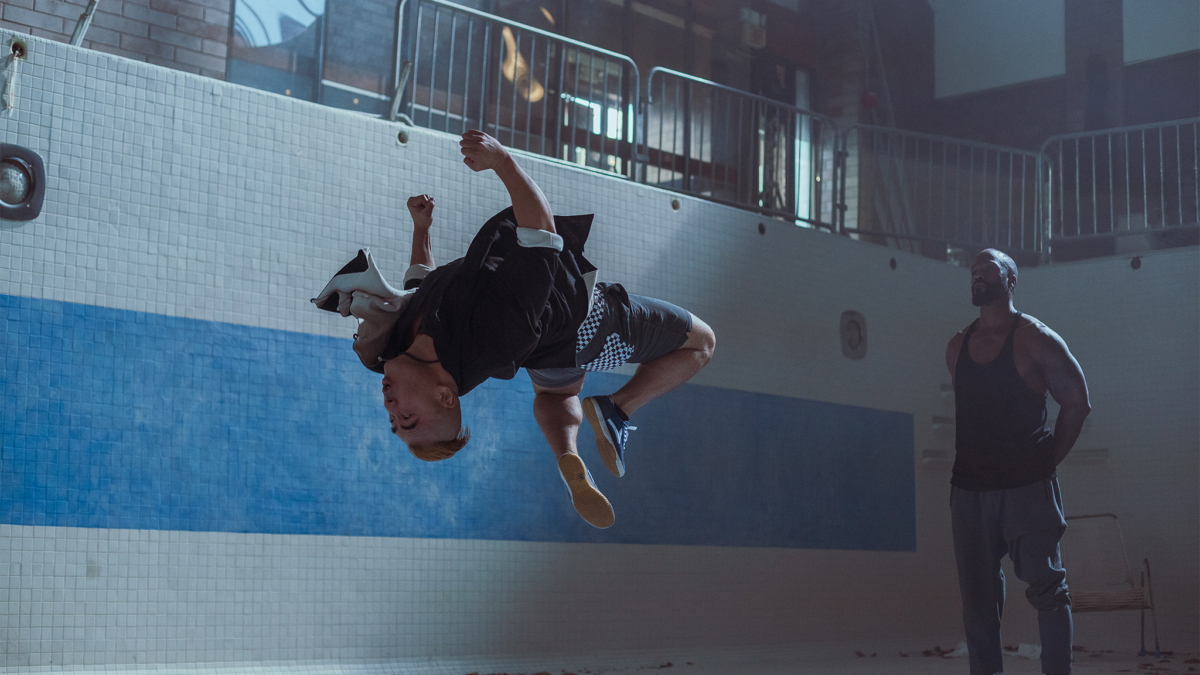Written By: Nathan Liu
For people like my father — that is, Asian Americans growing up in the 1960s — Bruce Lee was the closest thing to an Asian superhero. He was a martial arts master, a picture of physical fitness, and a man who always fought for the downtrodden against oppressors, whether they be gangsters in “The Big Boss” (1971) or racists in “Way of the Dragon” (1972). In a time when Asian characters were rarely seen on screen and severely stereotyped when they did appear, Lee was someone to admire and look up to. And when he died at the all-too-young age of 32, Lee was someone to mourn. In a strange way though, Lee’s early death helped secure his legacy in a manner that no film ever could. Because what happens to heroes in real life? They get old. They get frail. Less than savory aspects of their politics and/or personal lives get revealed. Lee’s early death spared us the disappointment of seeing him calcify into an embittered, feeble old man.
But what if he had survived? What if he had become an overweight, divorced, shadow of his former self? That was the general inspiration for writer/director Bao Tran when he came up with the idea for “The Paper Tigers.” The story of three middle-aged former martial arts prodigies — Danny, Hing and Jim — reconnecting to solve their late teacher’s murder, the film is both a loving tribute to, and deconstruction of, martial arts cinema. As Tran explained to me in an interview, “I was really interested in the themes of growing up and out of something you once loved. It might have been that passion that once consumed your every waking hour, that you ate and breathed for years, but then put it all away in a box somewhere — never to be thought of again. It seemed like a strong enough emotion that could be done in a martial arts story.” Having watched the movie, I’d say he’s right.
Easily the strongest aspects of the film are the fight scenes, the chemistry between the three leads — Alain Uy, Ron Yuan, and Mykel Shannon Jenkins — and the humor. This is a very funny movie, with Tran wisely choosing to highlight the silliness of three middle-aged men trying to act like Bruce Lee. There are several moments where it seems like they’re about to do something heroic, like chase down a suspect on foot, or leap down into an empty swimming pool for a fight, only to remember, ‘oh right, we’re 50 now, and if we do that stuff, we’ll break our hips.’
And while it might seem stereotypical to have a film starring Asian actors be about martial arts, the filmmakers take care to portray the men as all-American, with things like insurance jobs, custody hearings and bluetooth earpieces. Hell, both Danny and Hing are shown to not even understand Chinese. As Tran explained to me, “We wanted to of course create a fun Kung Fu movie but also tell a story that reflected our experience.” Speaking of “fun Kung Fu movies,” the film actually makes more than a few jokes regarding the clichés of martial arts cinema, such as the overemphasis on “honor,” and the operatic dialogue best exemplified by the character of Carter, an old rival of the three leads. Despite being a middle-aged white man, Carter dresses and speaks like a stereotypical Shaolin monk, both of which he is rightly mocked for, with Danny actually describing him as “a fortune cookie made from white flour.” And yet, despite all the jokes, it’s clear that Tran and company have a real passion for martial arts cinema, with him explaining in an interview with Crosscut, “I love martial arts movies.” And his co-producer Al’n Duong adding, “For us, growing up, it was just what you did after school. It’s very much part of our history.”
Now, to be fair, the movie isn’t perfect. The B-plot of Danny being divorced and wanting to spend more time with his son has little to do, thematically or story-wise, with the main mystery. There’s never a moment where the two narratives intersect; never an instance where the boy is put in danger as a result of his activities, for example. Likewise, the motivation of the killer, who doesn’t appear until over an hour in, is disappointing. And some of the editing in the dialogue scenes is a bit choppy, with the film breaking the 180-degree rule. Still, as a comedy and a martial arts flick, the film more than succeeds, with it possessing just enough humor and flashy fights to overstep the shaky narrative underpinnings. And as an independently produced, crowd-funded Asian American feature, it’s quite impressive, with the cinematography, music and acting all feeling like they belong in a much more expensive movie. In many ways, “The Paper Tigers” is much like its characters: out of date and a bit rough around the edges, but still lovable, and ultimately worth cherishing.
“The Paper Tigers” makes its New York Premiere at the 43rd Asian American International Film Festival. Ticket and screening information can be found here.

